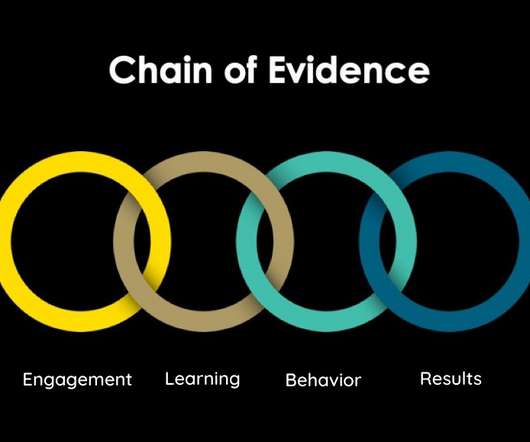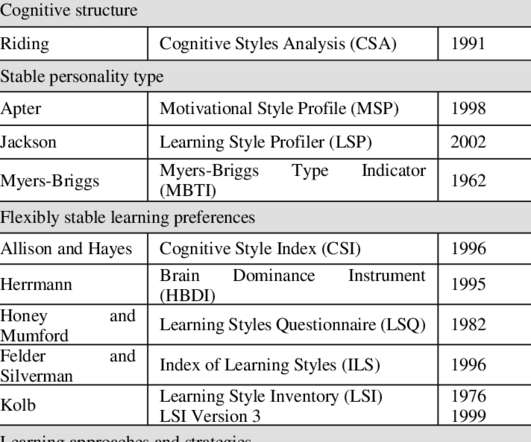What’s LEO’s Chain of Evidence Learning Evaluation Model?
Watershed
FEBRUARY 5, 2020
LEO Learning’s Chain of Evidence is a learning model that lets you make meaningful connections between business impact, behavior, learning, and learners. Actually, we’ve called on a lot of the learning evaluation models you may be familiar with—Kirkpatrick, Kaufman, Phillips, Anderson, and the like. Learner Change and Impact.




















Let's personalize your content